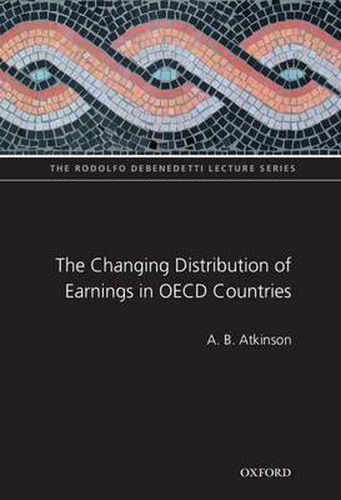Readings Newsletter
Become a Readings Member to make your shopping experience even easier.
Sign in or sign up for free!
You’re not far away from qualifying for FREE standard shipping within Australia
You’ve qualified for FREE standard shipping within Australia
The cart is loading…






This book is about how much people earn and why the distribution of earnings has been changing over time. The gap between the top and bottom in the United States has widened significantly since 1980. Why has this happened? Is it due to new technologies? What is the role of globalisation? Are there historical precedents?\n\nThe book begins with the \“race\” between technology and education, and shows that continuing technical progress does not necessarily imply a continuing rise in dispersion. It then examines the experience of 20 OECD countries over the twentieth century, material presented in the form of 20 country case studies. The book breaks new ground in assembling data on the distribution of individual earnings covering much of the twentieth century and drawing on a variety of under-exploited sources.\n\nThe findings overturn a number of widely-held beliefs. It is not the earnings of the low paid that have been most affected by the recent changes; widening is largely due to what is happening at the top. The recent rise in earnings dispersion is not unprecedented, but should be seen as part of a longer-run history of successive compression and expansion of earnings differences.
$9.00 standard shipping within Australia
FREE standard shipping within Australia for orders over $100.00
Express & International shipping calculated at checkout
This book is about how much people earn and why the distribution of earnings has been changing over time. The gap between the top and bottom in the United States has widened significantly since 1980. Why has this happened? Is it due to new technologies? What is the role of globalisation? Are there historical precedents?\n\nThe book begins with the \“race\” between technology and education, and shows that continuing technical progress does not necessarily imply a continuing rise in dispersion. It then examines the experience of 20 OECD countries over the twentieth century, material presented in the form of 20 country case studies. The book breaks new ground in assembling data on the distribution of individual earnings covering much of the twentieth century and drawing on a variety of under-exploited sources.\n\nThe findings overturn a number of widely-held beliefs. It is not the earnings of the low paid that have been most affected by the recent changes; widening is largely due to what is happening at the top. The recent rise in earnings dispersion is not unprecedented, but should be seen as part of a longer-run history of successive compression and expansion of earnings differences.